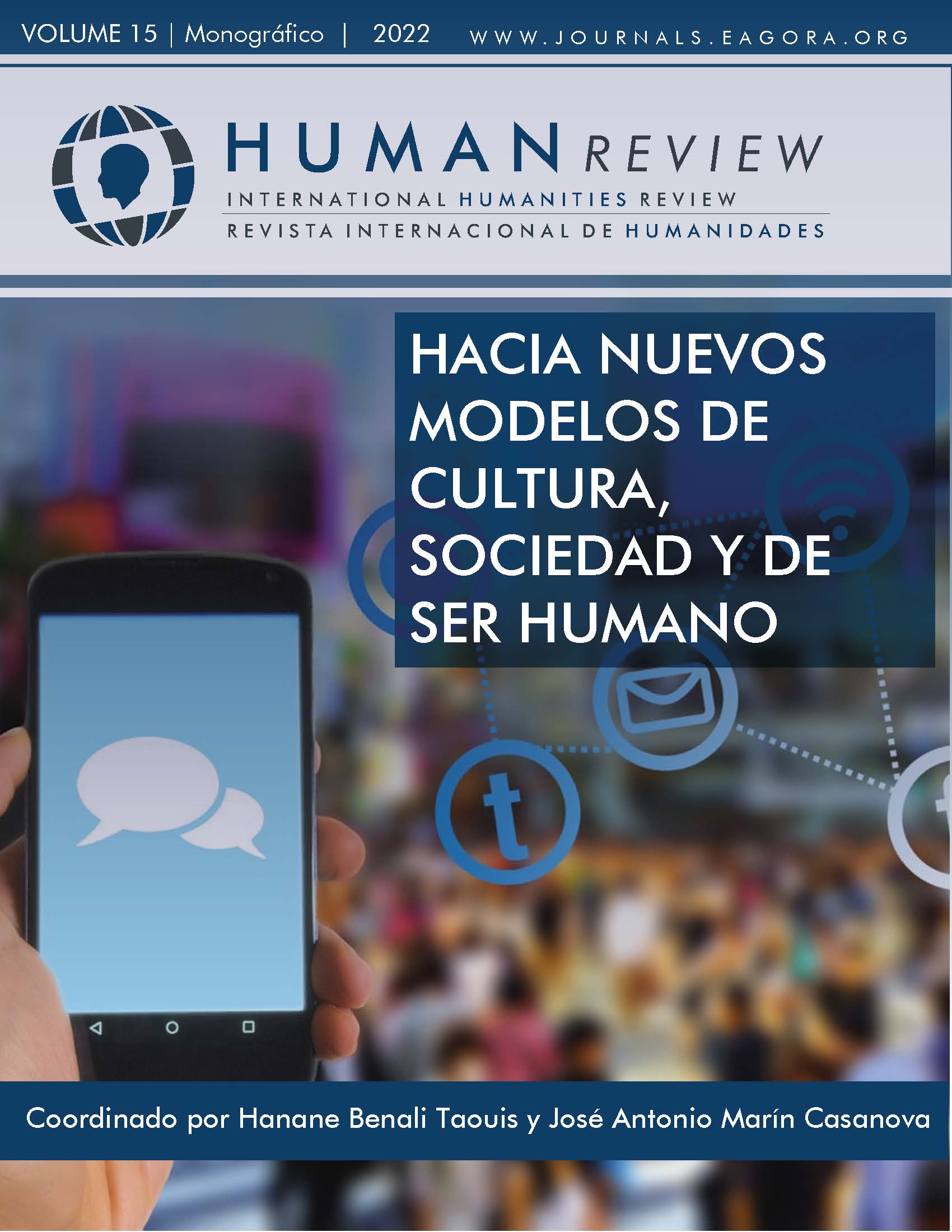Tourist experiences shared and viralized by travelers through networks: factors and facilitators
DOI:
https://doi.org/10.37467/revhuman.v11.4376Keywords:
Social media, Prosumer, Tourist experiences, Storytelling, Experiential content, Interpersonal emotions, MindfulnessAbstract
The objectives of our study will be based on delving into the fact that the true prosumer has shaped the personification of absolute interactivity in the generation of messages, stories or any other type of content. Therefore, it is emphasized that not only its structure and its ingredients are transcendental for the effectiveness of a narrative, but also the way in which it is told, the medium used and the viewing platform. The sense of the fragmentation of the narrative itself is also relevant for the success of its argumentative and emotional hyperconnectivity.
References
Ayeh, J. K.; Norman, A. & Law, R. (2012). Predicting the intention to use consumer-generated media for travel planning. Tourism Management 2013, 35, pp. 132-143.
Cox, C.; Burgess, S.; Sellitto & C.; Buultjens, J. (2009). The role of user-generated content in tourists’ travel planning behavior. Journal of Hospitality Marketing & Management, 18(8), pp. 743-764.
Dunne, R. (2010). Young people’s use of online social networking sites – a uses and gratifications perspective.
Journal of Research in Interactive Marketing, 4(1), pp. 46-58. DOI:10.1108/17505931011033551 Doria, J. (2016). Las 40 puertas. Un camino hacia la inteligencia transpersonal y la atención plena. Editorial La
esfera de los libros, pp. 184-190.
Huang, Y.; Basu, C.; Hsu & M. K. (2019). Exploring motivations of travel knowledge sharing on social network sites: An empirical investigation of us college students. Journal of Hospitality Marketing & Management 2010, 19(7), pp. 717–734.Huang y Wei
Jacobsen, J.K.S. & Munar, A.M. (2012). Tourist information search and destination choice in a digital age. Tourism Management Perspectives, 1(1), pp. 39-47.
Jiménez, A. & Martínez G. (2012). Storytelling, en MERINO, María Jesús y YAGÜEZ, Estefanía (Coords.). Nuevas tendencias en investigación y marketing. Pozuelo de Alarcón (Madrid): ESIC Editorial.
Kang, M. & Schuett, M. (2013). Determinants of Sharing Travel Experiences in Social Media. Journal of Travel & Tourism Marketing, 30, pp. 107-93.
Kaplan, A.M. & Haenlein M. (2010). Users of the world, unite! The challenges and opportunities of social media.
Business Horizons, 53(1), pp. 59–68.Kim et al., 2016
Kumar, T.B.J., Goh, S.K. & Balaji M.S. (2021) Sharing travel related experiences on social media. Integrating social capital and face orientation. Journal of Vacation Marketing, 27(2):168-186.
Leung, T.K.P. & Chan Y.K. (2003). Face favour and positioning – a Chinese power game. European Journal of Marketing, 37(11–12), pp. 1575–1598.
Marine-Roig, E., Martin-Fuentes, E. & Daries-Ramon, N. (2017). User generated social media events in tourism.
Sustainability, 9(12), pp. 1-23.
Mcluhan, M. & Nevitt, B. (1972). Take Today: The Executive as Dropout. New York: Harcourt Brace Jovanovich. Munar, A.M., & Jacobsen, J.K.S. (2014). Motivations for sharing tourism experiences through social media. Tourism
Management, 43, pp. 46-54.
Pabel, A. & Prideaux, B. (2016). Social media use in pre-trip planning by tourists visiting a small regional leisure destination. Journal of Vacation Marketing, 22(4), pp. 335-348.
Tamborini, R., Bowman, N. D. Eden, A., Grizzard & M., Organ. (2010). A. Defining media enjoyment as the satisfaction of intrinsic needs. Journal of Communication, 60(4), pp. 758–777. https://doi.org/10.1111/j.1460- 2466.2010.01513.x
Tsiakali. K. (2018). User-generated-content versus marketing-generated-content: Personality and content influence on traveler’s behavior. Journal of Hospitality Marketing & Management, 27(8), pp. 946–972.
Vargas, J. (2016). La atención plena basada en la conciencia perceptiva como vínculo pedagógico entre tecnología y educación. [Internet]. Disponible en: https://www.intechopen.com/chapters/54943 DOI: 10.5772 / 68085. [Acceso: 2022-6-4].
Vargas, J. (2019). Storytelling Mindfulness: programa de narración de cuentos para meditaciones. [Internet]. Disponible en: https://www.intechopen.com/chapters/67587 DOI: 10.5772 / intechopen.86778. [Acceso: 2022-6-4].
Vargas, J. (2019). Stress 0.0. Experimental Program of Meditations for Stress Reduction. [Internet]. Disponible en: https://www.intechopen.com/chapters/67587 DOI: 10.5772/intechopen.91347. [Acceso: 2022-6-4].
Vargas, J. & Sacaluga, I (2022). Neurocomunicación visual consciente: gestión deliberada y potencial de la mirada, como argumento persuasivo no verbal para vencer y convencer [Internet]. Disponible en: http://revistas. bnjm.cu/index.php/BAI/article/view/453 [Acceso: 2022-6-4].
Yoo, K. H. & Gretzel, U. (2016). Use and creation of social media by travellers. Social media in travel, tourism and hospitality: Theory, practice and cases, 189.
Downloads
Published
How to Cite
Issue
Section
License
Those authors who publish in this journal accept the following terms:
- Authors will keep the moral right of the work and they will transfer the commercial rights.
- After 1 year from publication, the work shall thereafter be open access online on our website, but will retain copyright.
- In the event that the authors wish to assign an Creative Commons (CC) license, they may request it by writing to publishing@eagora.org









